I talk to thousands of customers each year about replacing their pool pump motors and the vast majority of our customers install the motors themselves without a hitch. However, occasionally we do encounter mistakes which are made when replacing your motor. So I decided to poll my fellow co-workers, manufacturers and vendors to come up with a list of the seven most common mistakes when replacing a pool motor. The results are in… Drum roll please…
#1 Replace Your Shaft Seal
The # 1 reason for motors going bad is corrosion to the motor due to shaft seal failure. We can’t emphasize enough the importance of replacing your shaft seal when you replace your pool motor. An important reason for replacing your shaft seal is that the warranty offered by the motor manufacturer is voided if there is seal failure. The manufacturer can spot a seal failure pretty easily as the face of the motor will get a scale build-up and often the shaft of the motor will completely seize. Typically if you use your old shaft seal, it will not line up properly with the new motor and you will have leakage. The good thing is that a shaft seal is pretty inexpensive (normally in the $15 range) and shaft seal installation is easy. We have made a video and step-by-step guide here showing how to install a shaft seal.
Another route you may consider is to get a tune-up kit, also known as a Go-kit. This kit consists of the $15 shaft seal, diffuser gasket, lid O-ring, housing gasket and lubricant for these O-rings. When you have the motor disassembled from your pool pump, it is an easy time to replace your O-rings and gaskets. Tune-up kits are normally in the $35 price range.
A few things to remember when replacing your shaft seal:
- Don’t touch the ceramic portion of the seal with your fingers as the oils from your skin will break down the ceramic.
- Remove both pieces of the old shaft seal as some customers have mistakenly tried to install the new seal over the top of the old seal.
- Follow our video guide on How to install a shaft seal.
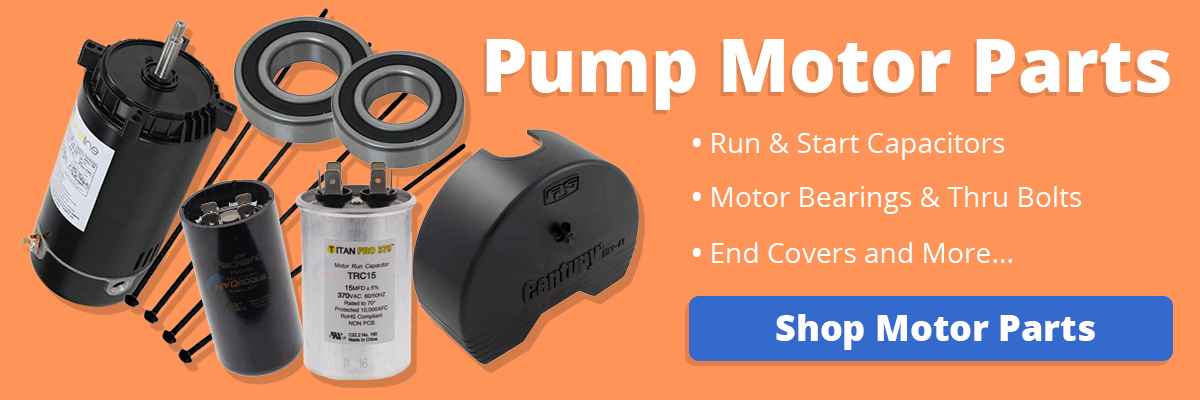
#2 Service Factor Service Factor, Service Factor
So you’re telling me a 1 HP motor is the same as a 1.5 HP motor? Well, in some cases this is correct. The topic of service factor is often an area of confusion, but can be fairly easily explained by understanding a few key concepts. The label on your current motor will have two very important pieces of information namely horsepower (HP) & service factor (SF).
If you multiply the horsepower rating times the service factor, you will determine your True Horsepower. So in our example below the 1 HP motor is the exact same as the 1.5 HP version of the motor.
1.0 HP X 1.65 SF = 1.65 True HP
1.5 HP X 1.1 SF = 1.65 True HP
High service factor motors are typically called Full Rate motors and low service factor motors are called Up Rate motors. Normally a Full Rate motor is equivalent to the next size HP in an Up rate model. Below is a handy-dandy chart illustrating this phenomenon.
| Motor Rating | Horse Power (HP) | Service Factor (SF) | True HP |
|---|---|---|---|
| Full Rate | .75 | 1.5 | 1.13 |
| Up Rate | 1.0 | 1.13 | 1.13 |
| Full Rate | 1.0 | 1.65 | 1.65 |
| Up Rate | 1.5 | 1.1 | 1.65 |
| Full Rate | 1.5 | 1.5 | 2.25 |
| Up Rate | 2.0 | 1.13 | 2.25 |
| Full Rate | 2.0 | 1.3 | 2.6 |
| Up Rate | 2.5 | 1.04 | 2.6 |
#3 Follow a Video Installation Guide
I know whenever I do any home repairs around my house I like to jump on Youtube to watch an expert perform the repair. This always seems to make the task go a little smoother. There are many videos online on how to replace a pool motor and these will help out tremendously during your installation. We would like to think our step-by-step motor installation guide and video is one of the best. We also cover how to remove your pool pump impeller, how to replace a shaft seal and how to wire a pool pump motor.
#4 Increasing or Decreasing Horsepower
On many occasions pool owners want to increase or decrease the horsepower of their motors. If you do decide to go this route then you will need to replace your impeller and possibly your diffuser.
Here are a few scenarios which are pretty common:
Switching to a larger HP motor – You currently have a 1 HP motor and you want to increase to a 1.5 HP motor. In this scenario if you stay with the 1 HP impeller you will only be getting the Gallons Per Minute (GPM) of a 1 HP pump, but you would be paying for the increased operational costs of running a 1.5 HP motor.
Switching to a smaller HP motor – You decide to downsize from a 1 HP motor to a .75 HP motor to save on electricity. If you do this without replacing your impeller to a .75 HP impeller then you will quickly burn out your new motor. This occurs because the .75 HP replacement motor will be overstressed by trying to output the water of the 1 HP impeller.
Sometimes when changing HP you will need to replace your diffuser. This is not always the case and varies according to pump model and HP. In most cases pool owners want to increase their HP, but more times than not the pump is already oversized for the pool. If you do increase your HP then the cost of operation for your pump will increase. A properly sized pool pump should be sized to turn your pool over in an eight hour time period. Here are a few considerations to take into account when increasing your HP:
- Can your filter handle the increased output of water?
- Can your plumbing handle the increased output?
- Should you change your impeller?
- How quickly will the new motor turn your pool over? (Quicker than eight hours may be overkill)
#5 Order the Correct Motor
Know your pump manufacturer & model
The easiest way to determine the motor you need is by determining the manufacturer and model of your pump. This will require that you inspect your pool equipment. Normally the manufacturer’s name and model of your pump can be found on the side of the pump housing near your strainer basket or on the motor label. I have listed some of the most common pump models here as I would estimate these account for 80% of the pumps on the market. These are: Hayward Super Pump, Hayward Super II, Hayward Power Flo, Pentair Whisperflo, Pentair Challenger, Sta-Rite Dura Glas, Sta-Rite Max-E-Glas & Jacuzzi Magnum. If you don’t see your pump listed here then visit our main pool motor page for a listing of all the replacement motors we carry.
Get the specifications from your motor label
If you are going to be heading out to your pool equipment for the manufacturer’s name and model of your pump then it would be helpful to jot down the following information from your motor label namely the HP, SF, Volts, Amps, RPMs, Cat #, Model #. This information will be on the label of the electric motor.
Armed with your pump manufacturer, model name and specs, it should be relatively easy to select your replacement motor from our main pool pump motor page. Also If you are able to obtain a model # from your motor then you can enter the model # directly into our search box and your motor should magically appear on our site.
Send us a photo, email, live chat or call
If you are having trouble tracking down the correct replacement motor for your pump then let us do it for you (this is what we get paid to do). So head on out to your pool pump with your smartphone or digital camera and snap a couple of photos of your motor label and pump and then send the photos to us at upload@inyopools.com. We will get back to you quickly with a motor recommendation. If you don’t want to send in photos then you can catch us on Live Chat or give us a call at 1-877-372-6038 and we would be happy to help.

#6 Go Energy Efficient?
Today there are some awesome energy efficient options for replacement pool motors. If you stay in an area of the country where energy costs are high then it definitely makes sense to consider an energy efficient motor. Traditionally the most expensive areas in the United States for electricity are California, Hawaii, Alaska (a huge pool state =)), New York and the Northeast. If you live in one of these areas, it makes sense to check out energy efficient options. There are a few different types of energy efficient motors: single speed motors, dual speed motors and variable speed motors.
Energy Efficient Single Speed Motors (33% Savings) – Single speed motors are the most common motors and are used on the majority of pools around the world. There are now energy efficient single speed motors which cost 20% – 30% less to operate than standard efficiency motors. Energy efficient single speed motors range from $185 – $350 depending on your horsepower.
Dual Speed Motors (58% Savings) – A step up in energy efficiency would be a dual speed motor. A dual speed motor can run at two speeds – a high speed (3450 RPM) and a low speed (1725 RPM). The two benefits of a dual speed motor are decreased operational cost and quietness during operation. The operational cost savings are determined by running your motor for a longer period of time each day at the low speed. Below are two examples which illustrate these savings.
Pool #1 – The Traditional Approach (Cost: $51.90 per month)
This 25,000 gallon pool has a normal 1.5 HP pool pump. It runs for eight hours per day. It pumps about 80 gallons per minute, which means that it circulates 38,400 gallons each day. The pump draws 9.0 amps at 240 volts. At a cost of 10 cents per kilowatt-hour, it translates to a cost of $1.73 per day or $51.90 per month to operate the pool.
Pool #2 – The Two-Speed Approach (Cost: 19.50 per month)
This 25,000 gallon pool has a two-speed 1.5 HP pool pump. It runs for 12 hours per day in low speed mode. In low speed mode it pumps about 40 gallons per minute which means that it circulates 28,800 gallons each day. Remember that the pool only needs to turn the water over once each day. The pump draws 2.25 amps at 240 volts in low speed mode. At a cost of 10 cents per kilowatt-hour, it translates to a cost of $0.65 per day or $19.50 per month to operate the pool.
The only time you really need to turn it to high speed is for backwashing or vacuuming, or if you need to increase the flow rate temporarily.
In this example you are moving less water, but the reality is that most pumps are oversized and as a result the pools are over-circulated. The two-speed pump provides just the circulation that your pool needs at a fraction of the cost.
Keeping the pool circulating for a longer period of time each day has a couple of advantages:
- The longer periods of circulation will help to reduce the occurrence of algae.
- If you have a salt system, you can run the system many more hours per day and get increased chlorine production if needed.
Dual speed motors range from $300 – $450 depending on your horsepower.
Variable Speed Motors (80% Savings) – Variable speed motors have gained widespread popularity over the past few years as they are the most energy efficient motors. Variable speed motors allow you to dial the motor into the exact RPM. You would typically select a range of 600 – 3450 RPMs. This allows for an almost infinite range of speeds for this motor.
The same principles for energy savings which were outlined in the dual speed motor example apply to variable speed motors, however, variable speed motors allow for far more flexibility. I personally think variable speed motors make a lot of sense if you live in area where energy is really expensive or if you have a pool set-up which requires more flexibility. On my pool I have quite a few water features and the variable speed motor is great because when I run my waterfall I can dial it in to a certain RPM. When I run my cleaner I use a different RPM, when I run my spa I also use a different RPM and when I run my filter pump I use yet another RPM.
Variable speed motors range from $490 – $700 depending on your horsepower.
#7 You Can Do This Yourself!
Remember you don’t need to pay hundreds of $$$ to a pool service company to replace your motor or pump. You can do this yourself and we have assisted thousands of homeowners with this process. If you follow these tips then you should have an easy time replacing your motor on your own without a professional. On average you are looking at $150 – $200 to replace your pool motor on your own versus $400 – $600 for a pool professional to do the job.
If you are not handy and don’t feel comfortable replacing your pool pump motor then you can still purchase the motor online and then call a local pool company to install the motor. Most customers just call around locally and say, “Hi! I need to get a price for the installation of a pool motor. I will be supplying the motor and shaft seal and I just need a price for the labor.” By taking this approach you can still save hundreds of $s. If you ever need any help with your pool equipment repairs, please let us know and we would be happy to assist.


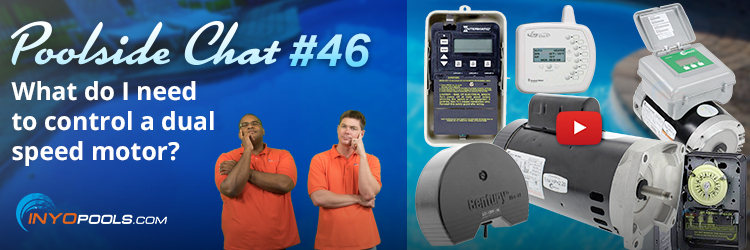
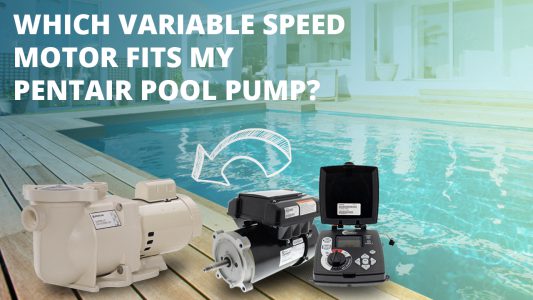
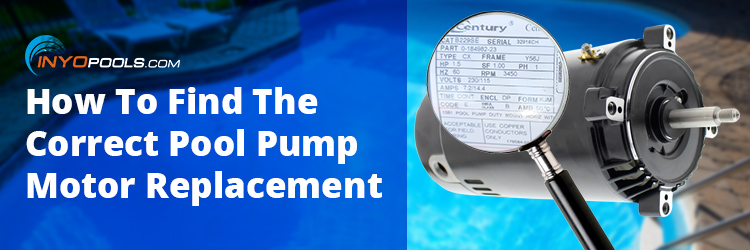
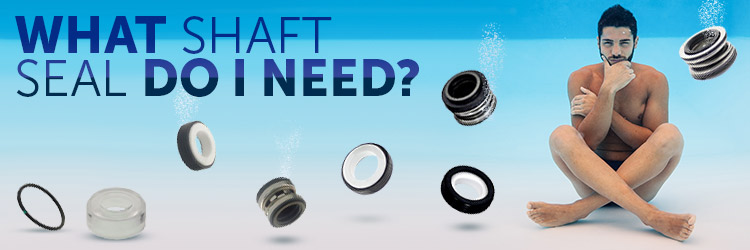






I have oler haywood pump this year on start up it smokes turned off think I need a new pump. How about you ?
It sounds like you need a new motor and not a whole new pump.
I have a Pentair motor that is making a high pitched noise and ready to be replaced. The SFHP is 2.2, but the HP and SF areas are blank so not sure of their true value. Model number 011514-355007. Part number O-177451-03, FR Y56Y, type CX, RPM 3450, HX 60, PH 1, volts 208-230. It is attached to a Whisperflo. We have a small in ground kidney shaped pool that is about 15,000 gallons, no hot tubs/spas. I have been told this motor is too much for our sized pool. First of all do we think this a 1.5HP or a 2HP? If 2HP, can we attach a smaller 1.5HP pentair motor to this same pump? Also, do the diffuser and impeller need to be changed as well if you change the motor to a smaller HP? Thanks.
I think I know what Chuck was saying. I myself am a retired plumber. And when Home Depot started giving a lot of DIY classes, our calls ramped up with customers that tried to do it themselves but messed things up and even made things a lot worse in some cases. As a plumber that got zapped by an electric water heater because my helper “swore” up and down the power was off and me believing him instead of double-checking with my meter, I touch nothing electrical if i can avoid it!
Now I am an apartment manager and when one of my tenants tried to add a bidet line from their shut off under their sink without letting me know first like they are supposed and broke the handle and caused a minor flood to their unit and the one below as well, then I get Chuck’s point.
On the flip side, the pool guy I had at my complex was terrible. He would come twice and the pool looked like crap. I watched him from the window and when he vacuumed the pool, the hose wasn’t attached! So I watched some YT vids, fired him and now I clean 3 other apartment complex pools besides mine and the water is crystal clear all year round!! I learned how to back-wash and tear down and clean the filters. The old pool guy charged the owner $120 a month for crap! I charge $80 a month and the owner buys the chemicals!
Hi, hope you can help.
My neighbor’s pump is making a thin, very high pitched tone when it runs. It’s not a screech, but a stinging extremely high pitched noise that drives us crazy all day while we’re at our own pool. It sounds like this:
https://www.youtube.com/watch?v=pZiCtnejeO4
Any idea what is wrong with her pump? She just had it replaced recently.
Thanks so much.
H.
It could be a bad bearing, but generally, they have a bit more of a grinding noise
Rust from metals left at the bottom of the pool can result in costly cleaning expenses. Pool services cost approximately $600 for cleaning services. A leaking pump in a swimming pool can cause a pool to lose water. This can be caused by corrosion and the pump can burn out when the water is allowed to fall below the proper level. Avoiding this mistake will eliminate higher water bills and the need to call pool services to replace or fix the pump system.
All things considered, this is a good site for anyone wanting to DIY. I think the information is good enough for an average person to understand, and it will save you big bucks.
It’s good to know that it’s common to make mistakes when trying to replace a pool pump motor by yourself. My brother-in-law needs his replaced, but he does not have the knowledge to do it properly. I’ll pass this information along to him so that he can get the help he needs.
http://www.splashswimmingpoolsinc.com/repairs.html
I followed the look up replacement instructions on here to replace my AO Smith SP1610Z2MSC with a what was suggested which was a B2842. The shaft to the new motor is too big- won’t fit my impeller, etc.
Why is this?
Hello Tina – I did a search for the SP1610Z2MSC, and the correct motor replacements are round flange 56J motors like the STS1152 or the B975. The B2842 you have selected is a square flange 56Y which is not compatible with your pump housing. Regarding the motor shaft, the dimensions for the B2842 shows the threaded portion of the shaft is half an inch wide but the motor you require is only a 7/16″ threaded shaft.
In short, get the correct motor and it should mount fine to the housing.
Thank you for this helpful information. I am pretty DIY myself. I just got an estimate to replace my pool motor for $1,100 in California. Just about fell off my chair. I have the smallest pool in the world, a little larger than a big large spa. When I asked how long it would take, he said no more than two hours. I’m not about to pay $450 an hour. I’ll get other estimates, otherwise I will try it myself.
Good for you, hope everything went well. I need to replace one of mine also, unfortunately the label is all faded and I don’t know what to order 🙁 .
My goodness, I was thinking I am in the wrong business; but I think I am just in the wrong part of the business. lol
Hi! We hired an electrician to replace our pump motor only. He installed a US Motors brand which matches all specs on our old Hayward Motor. The 1 1/2hp Hayward has worked well for over 8 years and has always operated/propelled our Polaris side wall pool vacuum. The new 1 1/2 US Motor is not moving enough water through the system to operate the vacuum. It is about 1/2 of the water that was pumping through with our old Hayward motor. What would cause this reduction in water volume force and pressure. Water pressure gauge went from showing in 20’s down to 10 with the new motor.
There are a few things to check for, we cover them in this article: How Do I Correct Low Water Pressure?
I checked all those items in the article. Is it possible that the US Motor brand just doesn’t operate as efficiently/strong as the original Hayward super pump motor? Thanks for your reply!
Maybe. US motors are the lower cost replacements for a lot of the A.O. Smith – Century motors found on pool pumps. But it could also be an air leak issue.
I would check to make sure you installed a motor with the correct Total HP.
Hey Kay, I’d take a wild guess the motor was factory wired for 220v and you have 120v, that’d cause it to run slower and not pump proper water. I saw a few customers with pumps wired incorrectly for years! Electricians are notorious for not changing the voltage on pumps, in fact on my very own pool I had an electrician hook it up to 220 (I had it temporarily hooked up with an extension to run on 110) and he ruined my brand new motor by not making that change.
Thank you for such an informational website! I think I just ruined my 1.5 horsepower. S F1.0 motor trying to open my pool. Local pool shop wants about 700 bucks. I found one locally through Craigslist. It’s a 1 horsepower with an SF of one. My original 1.5 ran on 220. This potential new one horsepower runs on 110. It would actually be much more convenient! Will I expect the same Performance Based on your article on this? Thank you again!
If you use the 1 HP uprated on a pool pump that has a 1.5 HP uprated motor, you are going to kill the new motor as well. The 1.5 pump is going to have a larger impeller, that the smaller motor is going to have trouble spinning, causing it to overwork and eventually die. If you go down in HP< you will need to change the impeller, and possibly the diffuser to make the smaller motor work. We carry all the replacement pool pump motor you could ever need, and we show you how you can install it yourself. The job will be a lot less than your quoted $700.
Easier and a more sure fix to replace the whole pump/motor assembly than just the motor, especially for amateurs.
Anyone have any idea how to figure out where the holes are inside the motor. Friend removed the place without marking it. Now we can’t figure out how to get the 4 long screws back on?
Is this an above ground pool pump motor that uses thrubolts?
hey this is for a spa but i have a flomaster 1.5 hp motor with a 1.0 sf with a bad impeller and a 1.65 hp wit a 1.0 sf motor that is bad can i use the 1.65 impeller on the good motor
Do the motors have matching frame types?
honesty i am not sure I think the 1.5 is a 48 frame and the 1.65 looks like the other one except there is a small hump on top with what looks like a small electric motor on the inside i will post a picture if i can
they are two different motors as far as brands i will post the motor types as well thanks
the 1.5 hp motor is a flomaster aqua flo fmcp pump now the impeller that was on it the factory 916 part number came back to a 1 hp impeller which i thought was weird the other motor is Watkins wave master 7000 jet pump 1.65 hp. I do think they are both 48 frame but i don’t know for sure
Look at the motor labels for the rating that says Frame (FR) and see if they match.
one has the fr on the label and one does not the one that does is a x48y that is one Watkins motor the flomaster does not say
I need to replace my challenger pump system it is very old. I have a 1 1/2hp now and it looks like 209v 230v. I see the new ones that say 115v 230v. Can i use the 115v 230v system?
You probably don’t have the pump wired for 208 voltage but you can test to verify. 208 is typically only used when you’re set up for 3-phase wiring and someone has split off a line. Normally, commercial sites would be the only ones with 3-phase electricity.
If you are 230v you can replace the pump with one that is 115v/230v.
Do your research I just replaced pool pump and seals etc. 165.00 bucks.grainger was the cheapest price for the motor..
I live in north Florida and have an in-ground 10,000 gallon pool screened-in pool with solar panels to heat the pool when needed. My 1 hp motor is 5 years old and starting to fail again as I hear it getting louder like five years ago. I typically run the pool pump 8 hours a day in fall/winter and 12 hours pr day in spring/summer. I would like to purchase a high end replacement pump/motor this week. Last time (December 2013) I went to a local national pool store franchise and paid $329.63 for a “1 hp Motor, USA? 125, mech seal and seal plate seal” that included a $75 installation charge. Should I use them again? I have no interest in doing it myself. Thanks.
Those prices are pretty steep for a single speed motor. I’m not sure which 1-hp motor you need but they generally range from $125 to $185. A pump gasket kit, which includes all the seals of the pump, costs about $37.95. There are plenty of technicians that will install the parts even if you did not get it through them.
If you need help finding the correct motor replacement, take a look at the below video: